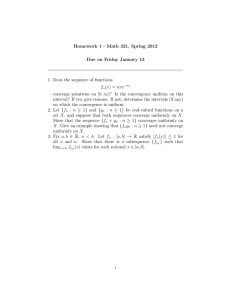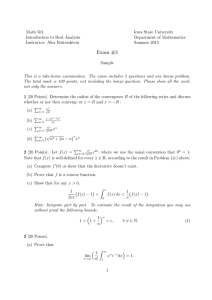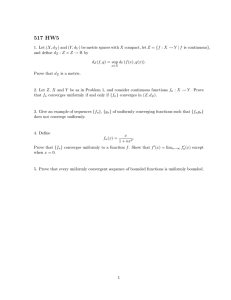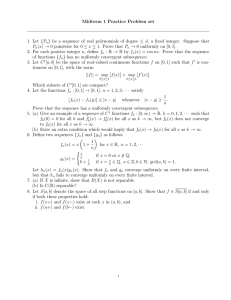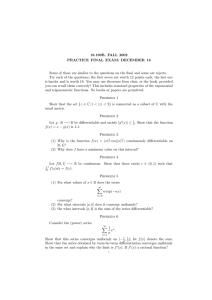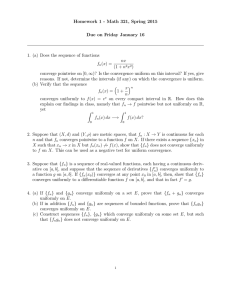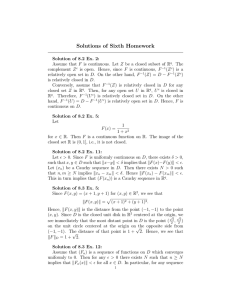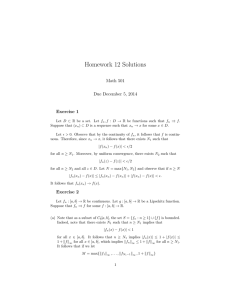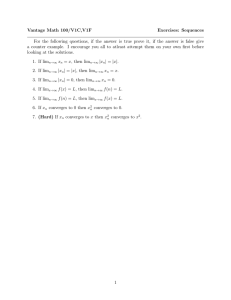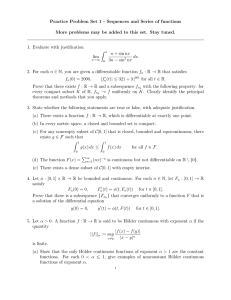Math 501 Iowa State University Introduction to Real Analysis Department of Mathematics
advertisement
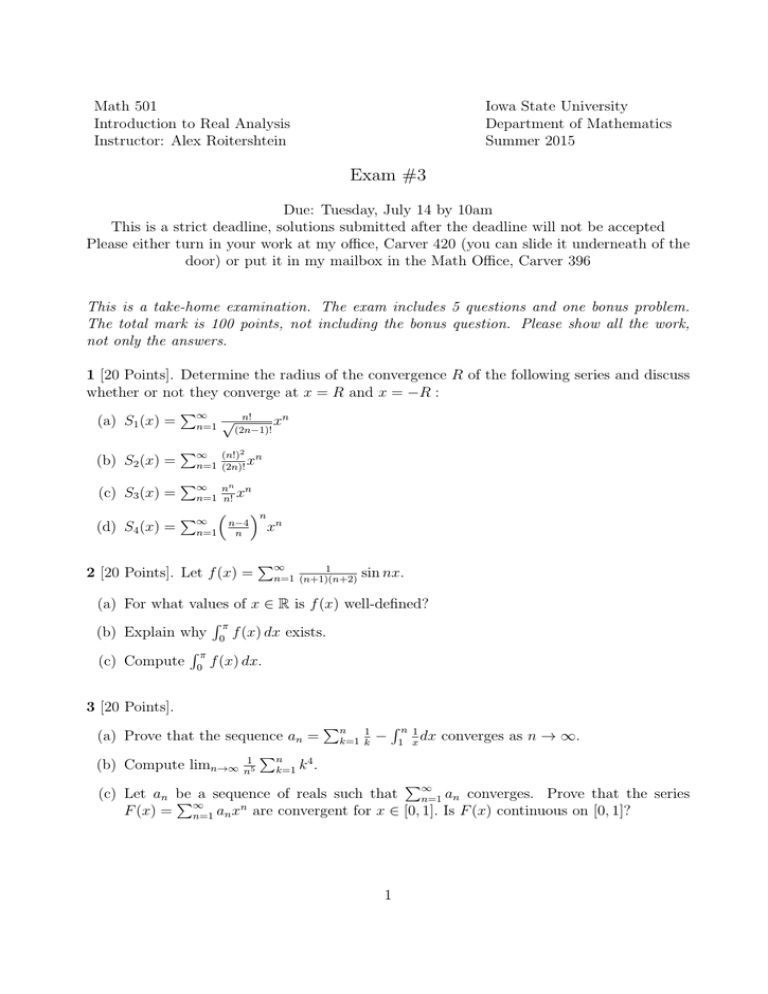
Math 501
Introduction to Real Analysis
Instructor: Alex Roitershtein
Iowa State University
Department of Mathematics
Summer 2015
Exam #3
Due: Tuesday, July 14 by 10am
This is a strict deadline, solutions submitted after the deadline will not be accepted
Please either turn in your work at my office, Carver 420 (you can slide it underneath of the
door) or put it in my mailbox in the Math Office, Carver 396
This is a take-home examination. The exam includes 5 questions and one bonus problem.
The total mark is 100 points, not including the bonus question. Please show all the work,
not only the answers.
1 [20 Points]. Determine the radius of the convergence R of the following series and discuss
whether or not they converge at x = R and x = −R :
P
√ n! xn
(a) S1 (x) = ∞
n=1
(2n−1)!
(n!)2 n
n=1 (2n)! x
(b) S2 (x) =
P∞
(c) S3 (x) =
P∞
(d) S4 (x) =
P∞ n−4 n
nn n
n=1 n! x
n=1
n
2 [20 Points]. Let f (x) =
xn
P∞
1
n=1 (n+1)(n+2)
sin nx.
(a) For what values of x ∈ R is f (x) well-defined?
Rπ
(b) Explain why 0 f (x) dx exists.
Rπ
(c) Compute 0 f (x) dx.
3 [20 Points].
(a) Prove that the sequence an =
P
(b) Compute limn→∞ n15 nk=1 k 4 .
Pn
1
k=1 k
−
Rn
1
dx
1 x
converges as n → ∞.
P∞
(c) Let an be
a
sequence
of
reals
such
that
n=1 an converges. Prove that the series
P∞
n
F (x) = n=1 an x are convergent for x ∈ [0, 1]. Is F (x) continuous on [0, 1]?
1
4 [20 points]. Consider
f (x) =
∞
X
n=1
1
.
1 + n2 x
(a) For what values of x does the series converge absolutely?
(b) On what intervals does it converge uniformly? On what intervals does it fail to converge
uniformly?
(c) Is f continuous wherever the series converges?
(d) Is f bounded?
5 [20 points]. For n ∈ N, let
fn (x) =
x
.
1 + nx2
(a) Show that fn converges uniformly to a function f.
(b) Prove that the equation f 0 (x) = limn→∞ fn0 (x) is correct if x 6= 0 but false if x = 0.
6 [bonus question] Let C[0, ∞) be the set of all real-valued functions continuous on [0, ∞).
For each n ∈ N let
kf kn = max{|f (x)| : 0 ≤ x ≤ n}
and
ρn (f, g) =
kf − gkn
.
1 + kf − gkn
Define
∞
X
1
ρ(f, g) =
ρn (f, g).
n−1
2
n=1
(a) Show that ρ is a metric on [0, ∞).
(b) Let (fk )k∈N be a sequence
of functions in C[0, ∞). Show that limk→∞ fk = f in the
metric space C[0, ∞), ρ if and only if limk→∞ fk (x) = f (x) uniformly on every finite
subinterval of [0, ∞).
2
